Each gas installation uses natural gas or propane-butane as fuel. Both substances pose a potential risk if a leak occurs. To prevent this from happening, you should use signaling and cut-off technologies. ASBIG, i.e. Active Security System of the Gas Installation, informs about the fault and closes the gas flow. According to the regulations, this type of detector must be installed in every room where the total power of all gas appliances is greater than 60 kW. Learn the most important information about gas detection systems in gas boiler rooms!
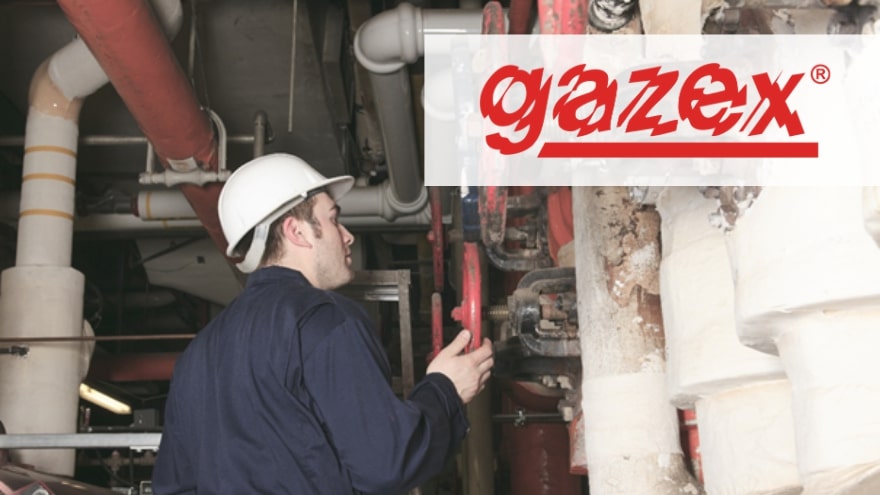
From the article you will learn more about:
- guidelines on the use of gas detection systems,
- architecture of the Active Gas Installation Security System,
- installation of detectors in multi-family and single-family buildings and in gas boiler rooms.
Guidelines for the use of gas detection systems and gas boiler rooms
The rules regarding the installation of gas detectors are regulated in the Regulation on the technical conditions to be met by buildings and their location . The regulations state that installations signaling unacceptable gas concentration values may be used both in single-family buildings and in facilities where constant supervision is established to ensure remedial actions:
- Gas sensors should be installed in rooms such as basements, gas boiler rooms or basements, as well as in other rooms where gas may accumulate during gas network emergencies.
- These devices cannot cut off the gas supply to the residential part of a multi-family building. Only individual sensors monitoring the condition of the gas installation in individual residential rooms may be installed.
- With the exception of single-family houses, all alarm signals warning of the risk of explosion should be directed to services obliged to take preventive action.
- Signaling and cut-off devices must be installed in all rooms with a total thermal power of the gas installation elements exceeding 60 kW. However, the valve enabling control of the fuel flow into the building should be mounted outside - between the main tap and the line entering the building.
- These regulations exclude gas installations intended for agricultural and production-industrial purposes. However, for safety reasons, sensors are used in boiler rooms of technological plants or thermal power plants.
Check out Gazex products at the Onninen wholesaler
To sum up, the installation of signaling and cut-off devices is mandatory in the gas boiler room of multi-family residential buildings and public utility facilities . You will most often find sensors in rooms such as kitchens, canteens, industrial halls or warehouses with heaters.
What are the characteristics of the ASBIG architecture?
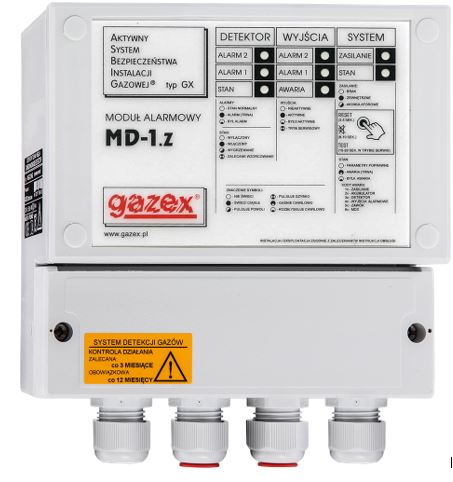
The Active Gas Installation Safety System is a signaling and cut-off architecture of the Gazex brand. It relies on several basic devices such as:
- gas or propane-butane detectors ,
- control panel - alarm module ,
- solenoid shut-off valve,
- optical-acoustic signaling device .
Together, these elements control the tightness of the gas installation in single-family houses, multi-family buildings or public buildings and protect the system against the risk of natural or liquid gas leakage.
Gazex brand detectors
How many gas sensors should be used?
The number of detectors that should be used for a given gas installation depends on several different factors. These include aspects such as:
- gas boiler room,
- number of gas receivers,
- type of ceiling and the possible presence of closed spaces under the ceiling.
Where to install gas detectors?
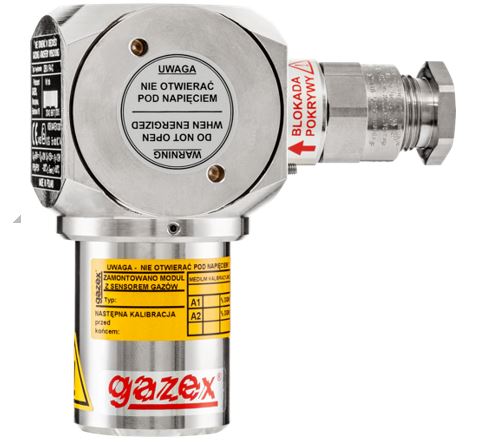
The location of the sensors depends on the type of gas installation and the architecture of the building. If the ceiling of the room is flat or has a slight slope, the detector should be placed between the gas receiver and the ceiling. However, remember not to place it near a heat source, e.g. chimney flues discharging exhaust gases. If the room is topped with a ridge and there are no barriers limiting the gas flow, it is worth locating the sensor not above the receiver, but in the ridge.
The installation of a gas detector is slightly different when liquefied propane-butane gas is used to power the installation. The sensor should then be placed approximately 20 - 30 centimeters above the ground level. It is worth remembering that the regulations make it impossible to install a gas installation using liquid gas fuel in rooms where the floor is below the level of the surrounding ground. Similar restrictions apply to spaces with wells or channels below floor level.
Do you have questions about the industry? Join the Świat Instalacji group!
Sensor sensors - what to remember?
Please note that Gazex gas detectors are equipped with replaceable modules with a semiconductor sensor. Over time, it loses its properties, which means it must be calibrated every 36 months. During periodic correction of indications, a replacement module should be installed in place of the existing module. However, the dismantled sensor can be used during the next sensor calibration.
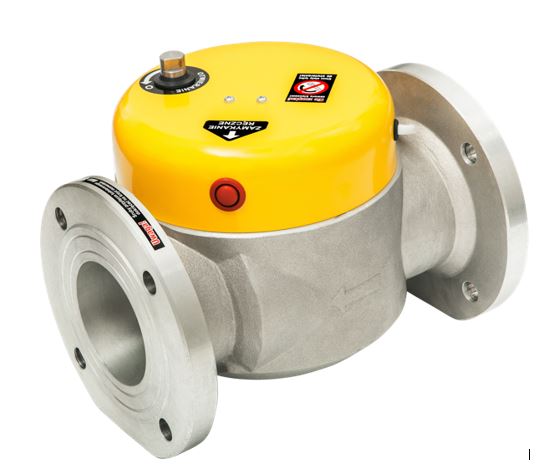
Particular attention should also be paid to gas detector sensors when they operate in high humidity conditions or when they are exposed to a gaseous environment that may interfere with the operation of the devices. In such circumstances, the sensor should be equipped with a different type of sensor - catalytic or infra-red.
Securing the tightness of large gas installations
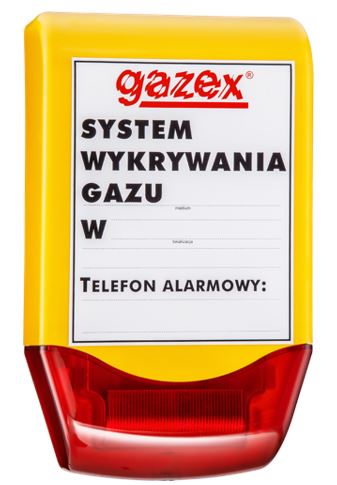
A gas installation in a home is much easier to protect with signaling and cut-off devices than, for example, an industrial gas installation with a large number of consumers. In the case of large halls with several or several dozen heaters or radiators, it is necessary to install expensive electrical cables. That is why digital gas detection systems (CSDG) are used in this type of facilities.
This type of technology uses the Modbus RTU communication protocol, and data transmission in the RS-485 standard enables visualization of the status of all sensors on the monitor screen. The gas installation is therefore controlled using a dedicated computer program.
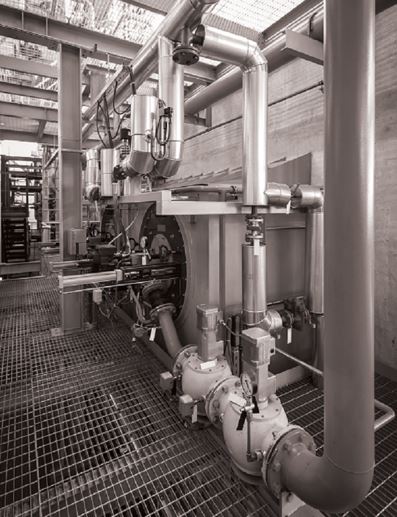
The CSDG architecture is slightly different from traditional ASBIG systems. It includes, among others, such elements as:
- natural gas or propane-butane detectors,
- control module,
- visualization module,
- shut-off valve,
- optical-acoustic signaling device,
- power supply with battery.
It is worth remembering that CSDG detectors use similar technologies to ASBIG, so their sensors require the same maintenance activities. Regardless of the solutions used, signaling and cut-off systems should be subjected to regular inspections. They should be carried out at least once a year. This is the only way to ensure the safety and convenience of using the gas installation at home, in a gas boiler room or in a public facility.
Complete your gas installation with Gazex solutions!
Each gas installation - in single-family houses, a gas boiler room or in a public facility - should be protected against the risk of leakage. So trust the Gazex brand and choose the ASBIG or CSDG system!